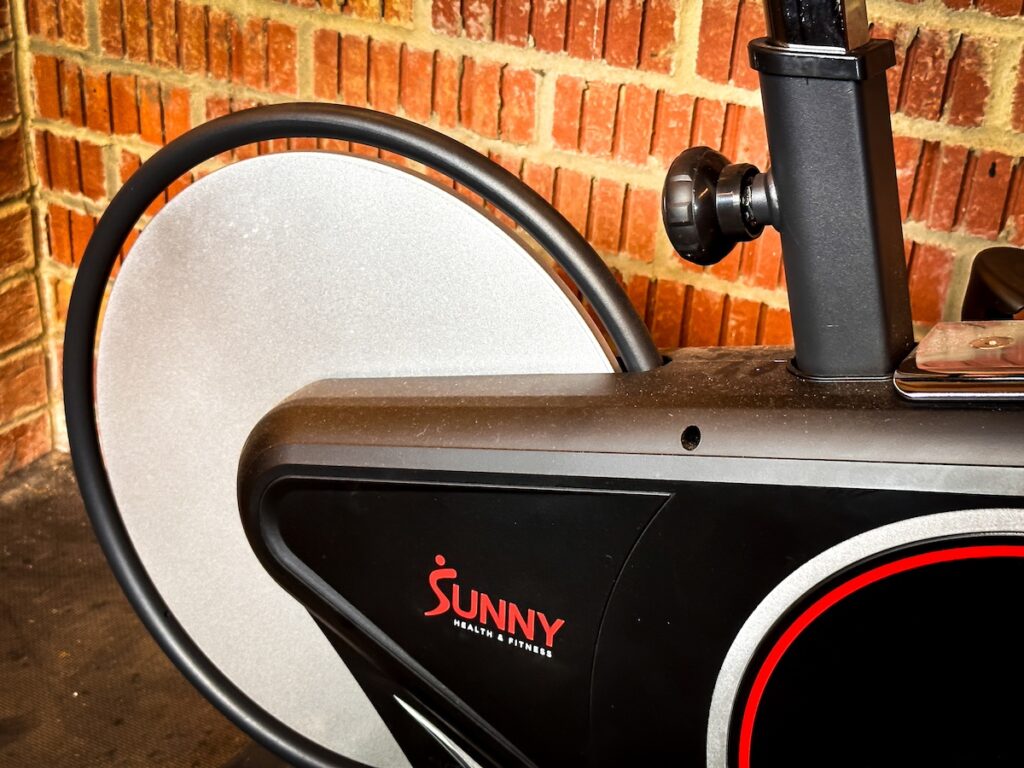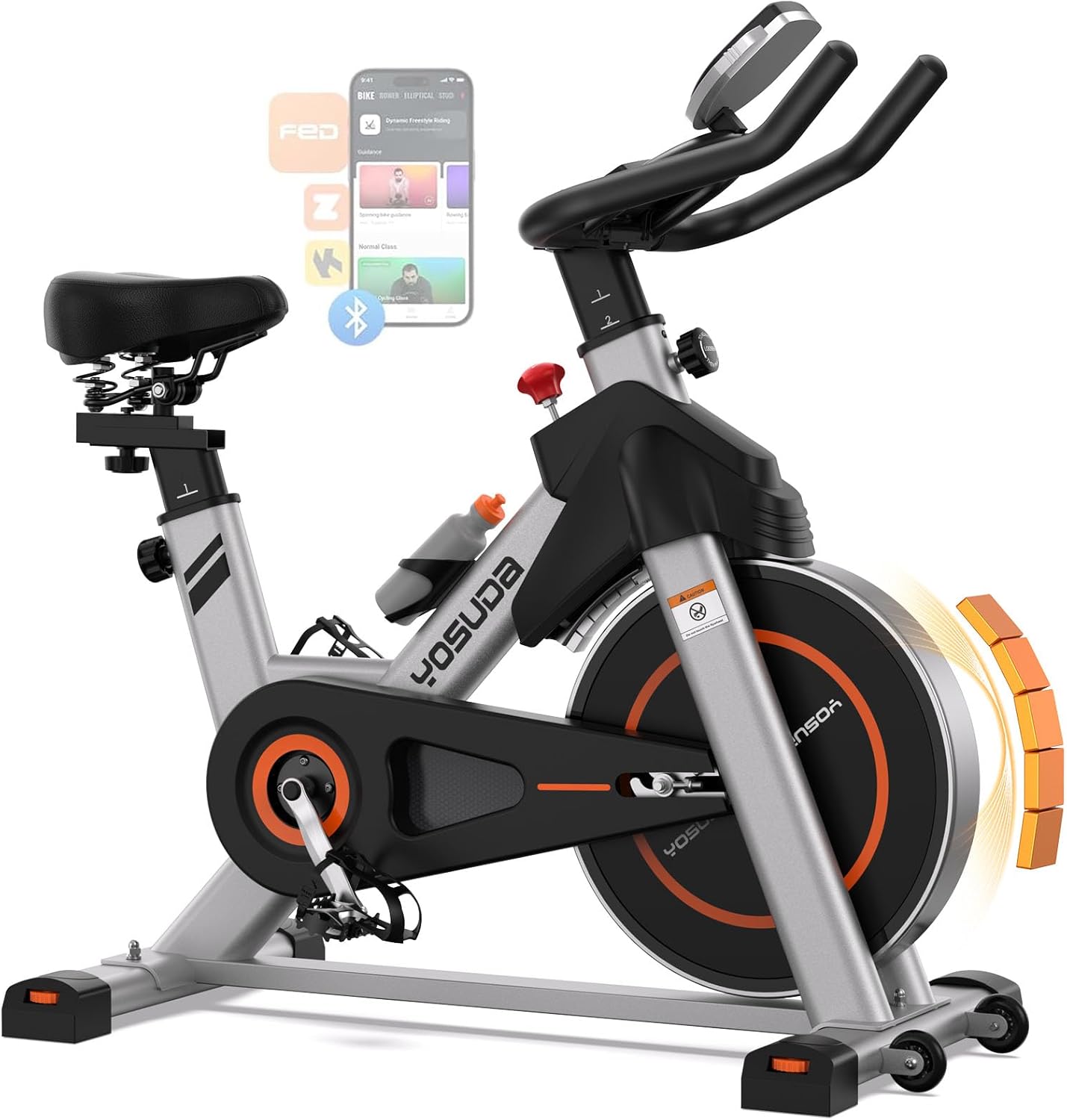The invigorating workout experienced from an indoor cycling bike could not be attained without increasing and decreasing the resistance. We will examine two vastly different resistance systems and how to identify which one is right for you.
Key Differences
So, what are the main differences between a magnetic resistance spin bike vs flywheel (friction/ contact) one?
It is essential to note the significance of the role that the flywheel plays within each resistance system. A flywheel is the metal wheel located at either the front or the rear of the cycle. It is why both methods are even possible. Below is a short comparison of the differences that we will discuss in greater detail throughout the article:
What is the Magnetic Resistance on an Exercise Bike
As more bike designs are including magnetic resistance, it is crucial to understand what magnetic resistance is and how it works. For magnetic resistance to occur, a few things need to happen, and as you can guess, this process includes magnets. A standard design contains two powerful magnets located parallel to one another with the flywheel between them.

The metal flywheel, which works as a conductor in this instance, spins through the two magnets’ magnetic fields and the force surrounding them. This magnetic field causes a drag on the metal flywheel, which creates an eddy current. An eddy current gets its name from the swirling motion of an eddy in a stream. The energy current flows in a closed-loop circuit that runs perpendicular to the magnetic field. When the resistance knob turns to either increase or decrease resistance, the magnets move closer or farther away from the flywheel. The closer the magnets get to the flywheel, the greater the magnetic field, therefore higher resistance is felt on the bike.
Solid frame, smooth ride, easy setup. The Yosuda Magnetic Plus Exercise Bike (Formerly YB001R) keeps things simple and affordable, making it a great entry-level choice.
What is the Friction Resistance
In the past, friction resistance has been the golden standard for exercise bike resistance systems. To understand how this type of model operates, we first need to understand what friction is. Friction is the resistance that is felt when attempting to slide two objects past one another.

In an exercise bike, friction resistance occurs when fabric pads apply pressure to the spinning flywheel. These pads can either be located on each side of the flywheel and squeeze the flywheel when the resistance knob is turned to the right or include one larger pad that applies pressure in a downward motion to the turning flywheel. The pads are usually made of fabric. Cotton is the most common pad material, but some bikes use leather straps such as the P1 Connect SPINNER® from Mad Dogg Athletics. Friction resistance most mimics that of a road bike.
Detailed Differences of Magnetic & Friction Resistance
Although, in the end, both resistance systems successfully add resistance to the indoor cycling bike, they are vastly different. We will discuss the differences that make each design unique.
Feel
The feel of these two systems can be a significant deciding factor on which option you might prefer. A magnetic resistance system has a slight light lag from when the resistance knob is turned until you feel the resistance begin. For cyclists who have become accustomed to a friction system’s feel, it can take a little time to acclimate to this type of system.

Friction resistance resembles riding a road bike. Just as you instantly feel the incline change as you begin to ride up a hill, the resistance change immediately starts as you turn the knob. The resistance change is smooth, consistent, and hard to beat.
Sound
If you have ridden an indoor cycling bike yourself and heard a soft “whooshing” sound being produced, then you are in the presence of a bike that uses a friction resistance system. A friction system works using cotton pads applying pressure to the spinning flywheel, as we discussed previously. These pads, therefore, create the light “whooshing” sound when they come in contact with the flywheel.
A magnetic system bike is almost silent due to the spinning flywheel traveling through the magnetic field and not contacting anything. If you do not mind the sensation of magnetic resistance, then a quieter ride is more beneficial.
Resistance Levels
Many friction indoor cycling bikes do not include a way to identify your specific resistance level. Instead of having set resistance levels, this option allows more flexibility to the rider. These bikes allow riders to continue to add resistance until it becomes impossible to continue to pedal.

Magnetic spin bikes include a monitor that quickly identifies your riding level. The number of levels might vary between different manufacturers, but it is standard that a level is always visible to the rider. Some bike options, like Bowflex C6 or Schwinn IC4, include up to 100 levels of magnetic resistance.
Maintenance
The initial cost is significant to consider when purchasing a bike. Still, a buyer must also consider the additional maintenance cost to keep the cycle at its best. When looking at either a friction or magnetic system, there are a couple of things to consider.
On average, friction resistance bikes require a greater amount of resistance over time than a magnetic option. Often friction resistance systems include a front flywheel. This placement of the wheel is located in the “sweat zone.” Sweat can cause erosion over time to critical mechanical components. The fabric cotton pads also need to be replaced approximately every 6-12 months.
The magnetic resistance cycle does not have components that need to be replaced as frequently, as technically, nothing comes in contact with the flywheel. The flywheel could also be either located in the front or rear of the cycle, depending on the brand. Flywheels situated in the back of the cycle also have a reduced possibility of sweat erosion. In consideration of maintenance, a magnetic resistance indoor cycling bike will require less.
Cost
The price can fluctuate between a friction or magnetic resistance system. Magnetic systems are more expensive than a friction system. Magnetic resistance bikes are more expensive to manufacturer, and therefore the expense is passed on to consumers. If you have a smaller budget, then a friction resistance system might be a better option.
Exercise Bike Flywheel (Contact/ Friction) vs Magnetic: Which is the best for me?
So, is magnetic resistance better for an exercise bike?
For most people, the answer is yes. They are generally quieter and need less maintenance; I would suggest this type if this is your first exercise bike.
However, the best resistance system for you is the one that best fits your needs. As you can see from our detailed comparison, many of the features rely on one another. Before making a purchase, make sure to take each type of bike for a test drive and determine which one works best for you.


Had Hip Replacement and want to use a Bike to help in my recovery. My concern is the start up or fist 3 to 10 seconds. I need a mechanism that will not require a HARD push to start, but stay constant from start to finish. The hip cannot tolerate an initial strain to get going. What type is good pick for this?
Hi!
Usually, magnetic spin bikes can be adjusted easier for this type of exercise. You can start with the lowest resistance level which is usually very easy and then use the lever to pick a constant amount of resistance till the end of the exercise.
For recovery reasons, we would suggest a Recumbent Bike or a Recumbent Cross Trainer like the Teeter (check our review here: https://indoorcyclinglove.com/freestep-lt7-review). The LT7 has twenty levels of magnetic resistance, ranging from 0 to 105 lbs, which are controlled with console quick keys.
I get operated knees and need bike for strengthening of leg muscles which one is better Magnetic or friction?
Hi!
Magnetic resistance bikes usually offer smoother workouts. The magnetic resistance is also more gradually applied, so it is easier to find the sweet spot for safely strengthening your legs.
I get operated knees and need bike for strengthening of leg muscles which one is better Magnetic or friction?
I have a bad back and think a recumbent bike is my best choice. Magnetic or friction?
Hi Michael,
Thank you for your comment. Indeed, for this kind of health problem, recumbent bikes are usually suggested by physicians or other qualified health providers; the seated position of a recumbent bike puts less strain on your back.
Regarding your question about the type of resistance, it doesn’t really affect how a recumbent bike works (at least we haven’t seen any medical publications about this), so you can choose whatever you think that better fits your needs.
However, the magnetic resistance has some extra benefits like the whisper-quiet and smooth operation, the little-to-no maintenance ever needed, and the wider range of resistance settings to make your workout more challenging over time.
I have a bad back and think a recumbent bike is my best choice. Magnetic or friction?
Hi Michael,
Thank you for your comment. Indeed, for this kind of health problem, recumbent bikes are usually suggested by physicians or other qualified health providers; the seated position of a recumbent bike puts less strain on your back.
Regarding your question about the type of resistance, it doesn’t really affect how a recumbent bike works (at least we haven’t seen any medical publications about this), so you can choose whatever you think that better fits your needs.
However, the magnetic resistance has some extra benefits like the whisper-quiet and smooth operation, the little-to-no maintenance ever needed, and the wider range of resistance settings to make your workout more challenging over time.